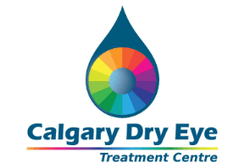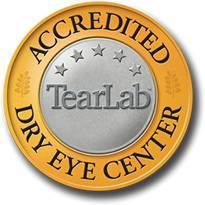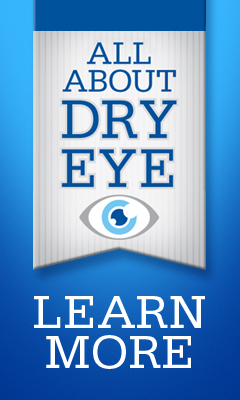There are two kinds of tears: constant (or basal) tears, which are complicated, and reflex tears, which are simpler. As luck would have it we really are only concerned with the complicated ones. After all if it was that simple, you'd be out enjoying the sunshine rather than reading about dry eye treatments.
(Okay, okay, to save you the trouble of looking them up: constant tears are the kind your eyes are constantly producing without your being aware of it and which keep your eye - well, maybe not YOURS but most people's - reasonably well coated throughout the day and night. They are complex. Reflex tears, on the other hand, are simpler and more watery, the type that your eyes produce in large quantities if you get grit in your eyes. Naturally, it's the complex ones that we have to deal with.)
Now, back to those constant tears. There are four basic tear components you should know about: oily stuff, watery stuff, sticky stuff, and other stuff.
Oily stuff (lipids)
Remember in your science lessons about 20 (30? 40? more?) years ago where you learned that oil floats in water? Well, guess what, that's true here too! The lipid layer is oily stuff that sits on top of your tears. It is made by your meibomian glands, glands sitting in both your lower and upper eyelids. The purpose of the lipids is that they keep the watery part of your tears from evaporating. If you think about it, that's a good thing. Suppose you've got lots of tears, but no lipids, well, your tears will evaporate and your eyes get dry. Fine, your eyes will (well, for most of you anyway) just keep making more tears, but what happens if your tears are evaporating faster than you can make new ones? Big problem. That is the problem, or rather one of the problems, that a lot of us have. In fact, if you don't seem to have a problem with the watery stuff but still have classic "dry eye" symptoms, this is almost certainly a big part of your problem. Oh... and by the way, please don't be startled to find that your first five or ten eye doctors never mentioned this to you.
The main reason you might not have enough oily stuff (lipids) is that those meibomian glands, the things that make it, get clogged. The oil is supposed to be nice and warm and runny, but sometimes it can get thick and gets stuck. This can often be improved, but may well be chronic requiring regular treatment. Lid therapy - particularly heat treatment - helps deal with this by first kind of melting the stuff that's thickened up, then gently squeezing it out. Some oral antibiotics such as doxycycline can sometimes help too. Some nutritional supplements such as flaxseed oil may be useful as well.
Watery stuff (aqueous)
This is the main part of your tears. It's secreted by the lacrimal glands. You either make enough, or you don't. If you don't, this is a problem - the closest thing to true "dry eye" that there is. If you don't have enough tears of your own, usually you'll be told to add some fake tears (artificial tear supplements) or, if you're so dry that you're adding tears all day long, you'll probably be given tiny little plugs in the little holes your tears drain out through, so that you can trap the tears you have in your eyes as long as possible. If those work really well, some people burn the holes shut so they don't have to worry about the plugs falling out (cautery). And if that's not enough, well, first you need to make sure you haven't got any of the Other Problems or that if you have, you're treating them. And if that's not enough, and you're completely miserable, there are always more types of treatments to look into.</p>
Now, if you don't have enough of this watery stuff, AND you don't have enough lipids to help you keep the small amount of watery stuff your lacrimal glands can be persuaded to actually produce from evaporating as fast as it's made, then you've got an Even Bigger Problem, and you need to address both problems separately.
Sticky stuff (mucins)
This is Rocket Science, we are told. Really high-tech spooky stuff that no one actually understands. - Just my luck, you say. The very thing that's probably wrong with me, they don't even know how it works or what to do about it when it doesn't work. Yes, our feelings exactly - sigh.
Anyway, the point of the mucin layer is to make your eyes wet. "Hmm," you will say. "But if I have tears in my eyes, doesn't that, well, by definition, sort of mean that they are wet?" Sorry, no. This just isn't your day, is it? Look at your car when it's drizzling outside. Could you swear that the entire surface is coated with water? Look carefully. No? See, I'm no scientist, but I kind of figure that unless you've got it totally submerged in water (and please don't try this experiment with your car) a lot of things don't actually stay 100% wet across their entire surface for very long at all. - Porous things that soak up water, fine, but smooth things, well, that's a little harder. Funnily enough, I consulted a PhD surface chemist about this and he agreed. It really DOES take a special kind of substance to stretch and spread around and stick to your eye. Hence Rocket Science. So the watery stuff (aqueous) sits on top of the sticky stuff (mucin), which serves to glue down the watery stuff as long as possible. Where mucin goes aqueous will follow. Where mucin doesn't go, well, that's going to be dry. And unprotected, because that's the other job of the mucins, standing between your corneas and the big bad world of bacteria.
Other stuff
There's all kinds of other stuff in your natural tears, like Substance P and lyposomes and other goodies that nourish the surface of the eye (the epithelium) and kill bugs. It's good stuff. The more of it, the better. In fact, unless you are truly and totally dry (meaning you haven't got anywhere near enough Watery Stuff), we think maybe the fewer of those fake tears you use, the better, because they might just wash all this good stuff out of your tears.
Thanks to The Dry Eye Center for content used in the creation of this webpage. ©2011 - All rights reserved. Reproduction other than for one-time personal use is strictly prohibited.



